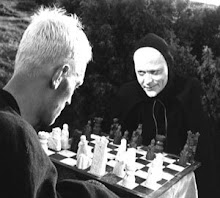A philosopher by the name of Edward Feser discusses Steely Dan:
""""Even the most casual listener will agree that the “Steely Dan sound” is quite unlike that of any other contemporary pop group. (For you music buffs, there is even such a thing as the “Steely Dan chord.”) Part of this has to do with the heavy jazz influence the band’s principals Walter Becker and Donald Fagen bring to their music. Part of it has to do with Fagen’s unique vocals: Anyone other than Fagen singing “Deacon Blues” (say) is pretty much just doing karaoke, so essential is his distinctive voice and style to the overall Steely Dan aesthetic. But there is also the perfectionistic “smoothness” and polish Becker and Fagan famously bring to every tune, an effect that requires intensive studio work. Indeed, playing live was from the beginning something Becker and Fagen did only extremely reluctantly. Steely Dan has always been essentially a studio band – not only in the sense of emphasizing recording over live performance, but in the sense of frequently using studio musicians in an ad hoc way rather than having (apart from Becker and Fagen themselves) a permanent roster of players, and in the sense of relying crucially on various studio mixing techniques to achieve certain effects that would have been otherwise impossible.
Especially after the mid-1970s, with each individual song on a given album, Becker and Fagen would seek out those session players whose strengths were most suited to it. Different players would often do multiple takes, followed by other players doing further takes on the same part, until exactly the sound Becker and Fagen had in mind was achieved. Often the finished song would combine the work of various musicians who hadn’t actually played together in any one session. Moreover, part of one solo might be combined with part of another. “To create absolute millisecond-perfect drum tracks,” Sweet tells us, “a drum machine, a computer, a live drummer or combination of all three” might be used (p. 121). And so forth. And yet the end result would be absolutely seamless. The way the “Steely Dan sound” was honed to perfection in the famous Aja sessions has been described at length not only in Sweet’s book, but in Don Breithaupt’s book Aja and in the DVD Classic Albums: Steely Dan – Aja. ....."
Professor Feser here responds to some negative commentary on pop-rock music (from Scruton). Though I generally do not agree with Feser's libertarian views--or his neo-Thomist religious views-- I am in agreement with Feser for the most part in regards to defending some rock and jazz music against the classical-only snobs, though Feser does take a somewhat clinical view of the Dan's sound. Along with the great musicians, modern studio technology itself contributed to that smooth Dan sound and mystique, as did Fagen's lyrics, which are not so smooth, but rather noirish (though at times maybe bittersweet, like kirschwasser from a shell).
That said, I am sympathetic to Scruton's slight-Ludditism in regards to real music. Rachmaninoff required no synthesizer or 24 tracks of whack, nor did Charlie Parker.
Steely Dan may need their plush downtown studios, but they don't depend on celebrity -spectacle, as do the usual rock/pop/rap stars. In terms of Scruton's definition of rock star as sort of bogus-priest, Steely Dan appears to be excluded. In terms of moving say Absolut vodka, however, the Dan certainly has some libertarian cred.


No comments:
Post a Comment